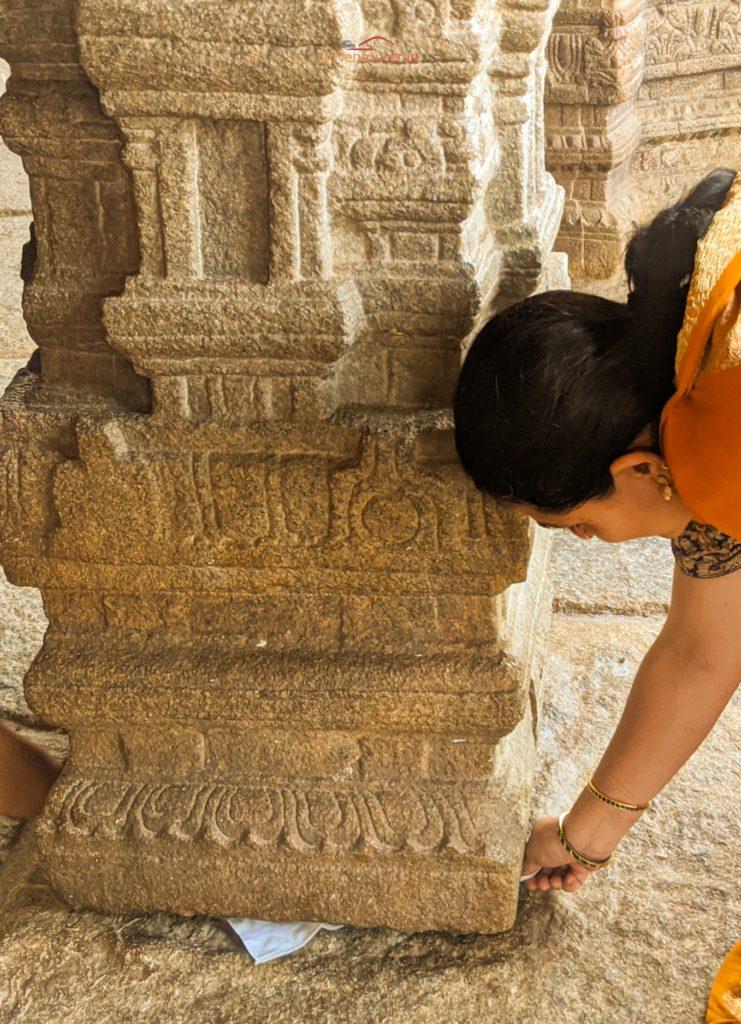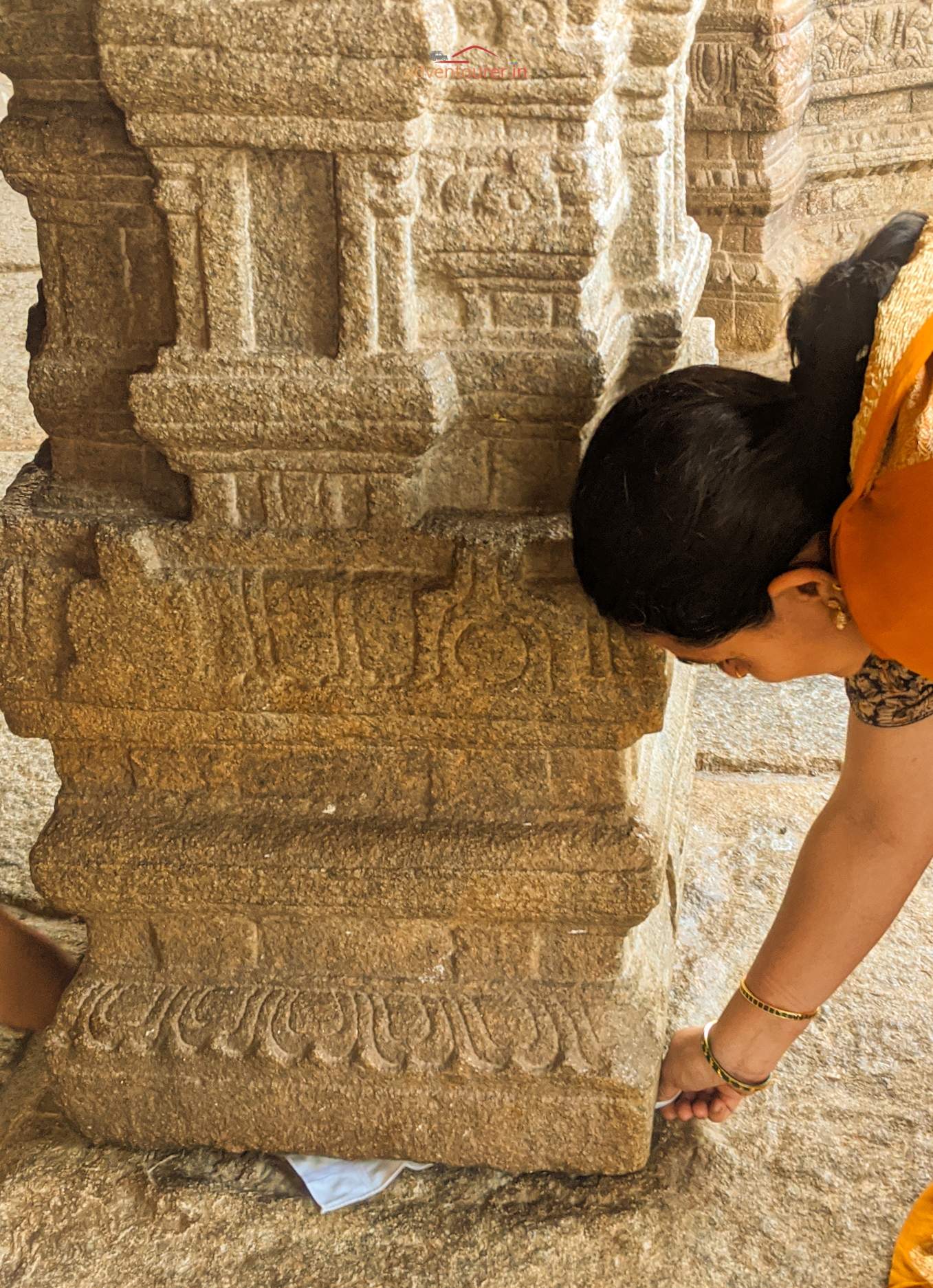The Veerabhadra temple at Lepakshi is built in the Vijayanagara style of architecture, on Kurmashaila, a low altitude hillock of granite rock in the shape of a tortoise (Kurma). The presiding deity is Veerabhadra, a fiery form of Lord Shiva.
The main temple is laid out in three parts: ranga mantapa, ardha mantapa, and garbhagriha.
Ranga mantapa has intricately carved pillars, sculptures, and paintings that depict the unbelievable talent of the temple architects of the Vijayanagara era. This ancient temple has inscriptions on every pillar. The pillars of the mantapa mesmerizes you with the life-like sculptures of gods and goddesses playing musical instruments and dancing. You can see Lord Shiva performing Ananda Tandava, Brahma playing the drum, Narada on tamburi/tambura, apsaras in dancing postures, and many divine artists playing drums and cymbals, creating a world full of divine melodies.
Of the 70 stone pillars supporting the roof of the ranga mantapa, Lepakshi, one of the pillars is called as ‘aakasha stambha’ or popularly known as the ‘hanging pillar’ that barely rests on the floor. There is a small gap between the floor and base of the pillar which gives the impression that the pillar is hanging. It is supported at the top and free-hanging below, and does not touch the floor. It is possible to pass thin objects such as a sheet of paper or a piece of cloth from one side to the other.

See video below how a piece of cloth is passed below the pillar from one end to the other end.
Unfortunately, the pillar is a bit dislodged from its original position when a British engineer tried to move it in an unsuccessful attempt to uncover the secret of its support.
